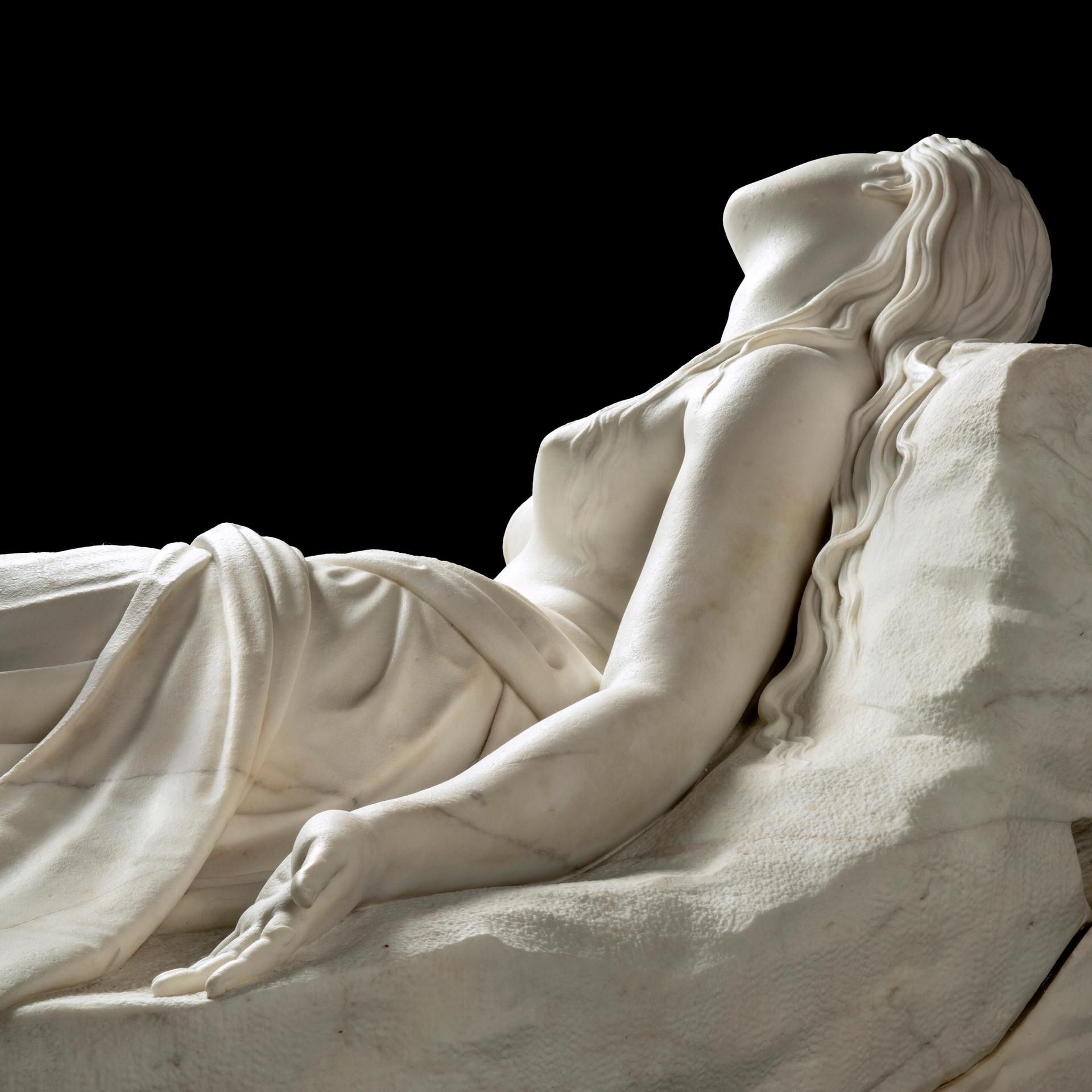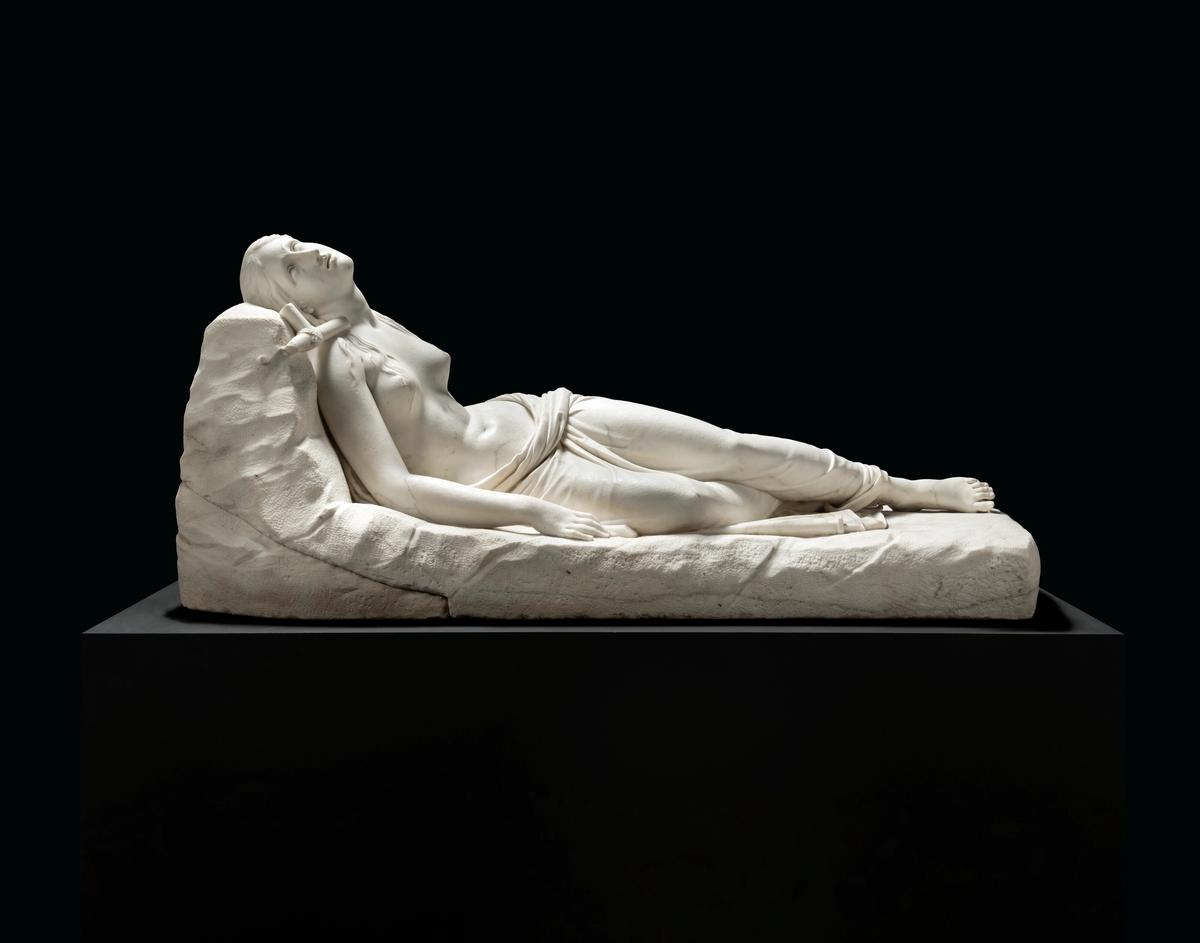Headlining Christie's Classic Week sales in London this July will be a rediscovered marble statue by the Italian sculptor Antonio Canova, executed in the final year of the artist's life. Should the work fetch anywhere within its £5m-£8m estimate, this will represent a markup of at least 1,000 times its last sale price, when it was purchased in a London garden statuary auction in 2002 for just £5,200.
Maddalena Giacente (Recumbent Magdalene) (1819-22) was commissioned by the then UK prime minister Robert Jenkinson, 2nd Earl of Liverpool. It depicts Mary Magdalene "in a state of ecstasy", according to a Christie's press release. Canova died in October 1822, one month before its delivery to Jenkinson. Upon the prime minister's death in 1828, it passed down through his family and was shown in several major public exhibitions across the UK, before being sold with the manor house Witley Court. It was at this stage that the statue's attribution to Canova was lost.

Maddalena Giacente (Recumbent Magdalene) (1819-22) by Antonio Canova. Courtesy of Christie's
The work was then sold three times, including in the 1930s to Violet Van der Elst, an activist who campaigned against the death penalty in the UK. It was recorded in the garden of Van der Elst’s house, in Addison Road, Kensington, where it is known to have remained after the sale of the property in 1959 to a local art dealer. It is reported to have been sold again with the house in the late 1960s.
The current owners, reported by the Financial Times as a British couple, contacted the London-based advisor Francis Outred who led a team that made the discovery. A condition report finds that a crucifix on the figure's shoulder is now largely missing, but that the work is in otherwise "very good" condition.
"This work has been searched for by scholars for decades, so the discovery is of fundamental importance for the history of collecting and the history of art," says Mario Guderzo, a leading Canova scholar and former director of the Museo Gypsotheca Antonio Canova in Possagno, Italy. A plaster model of the work, made in 1819, is held at the museum.
The work will go on show this weekend at Christie’s London and then tour to New York (8-13 April) and Hong Kong (27 May-1 June). The sale coincides with the bicentenary year of Canova's death.


